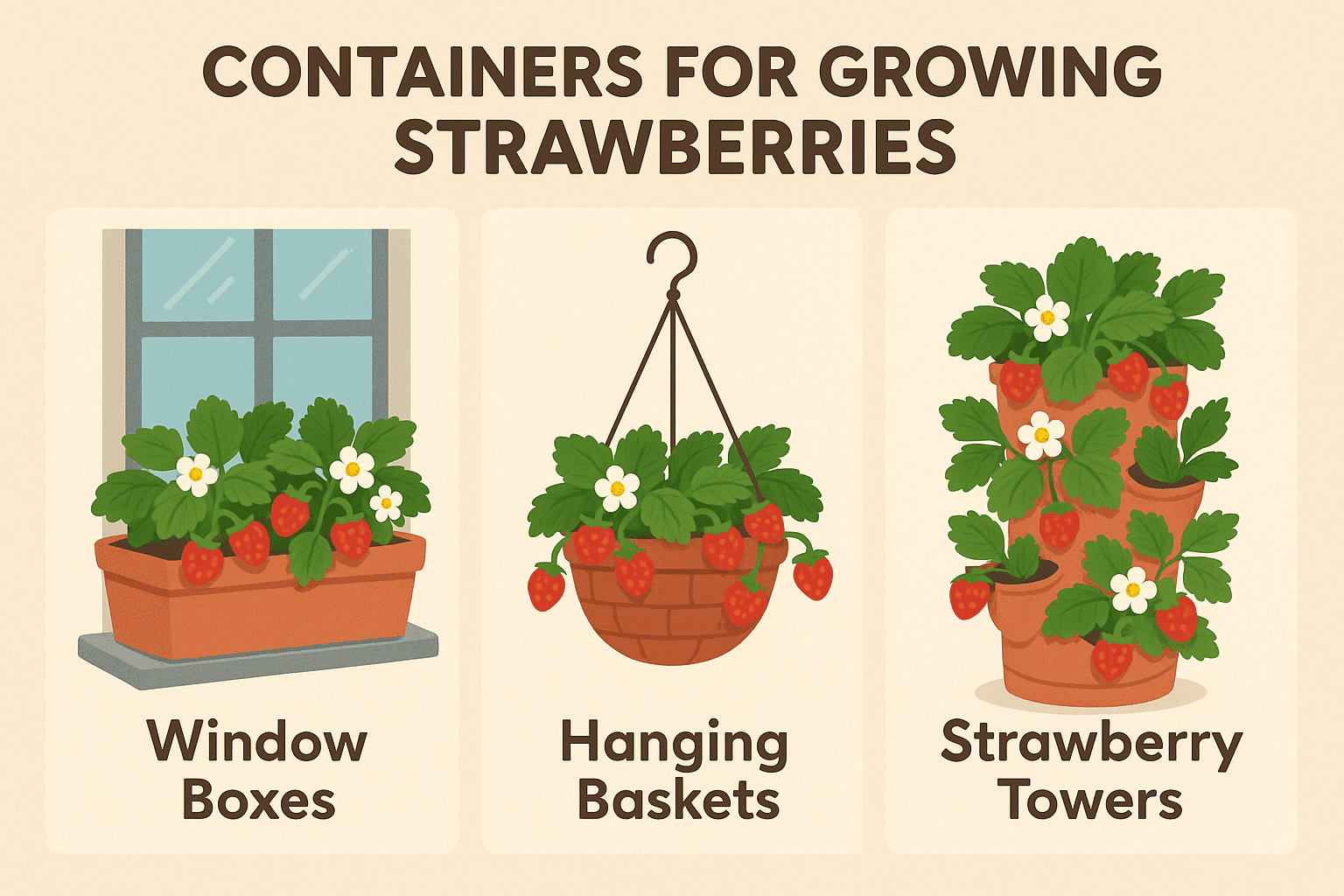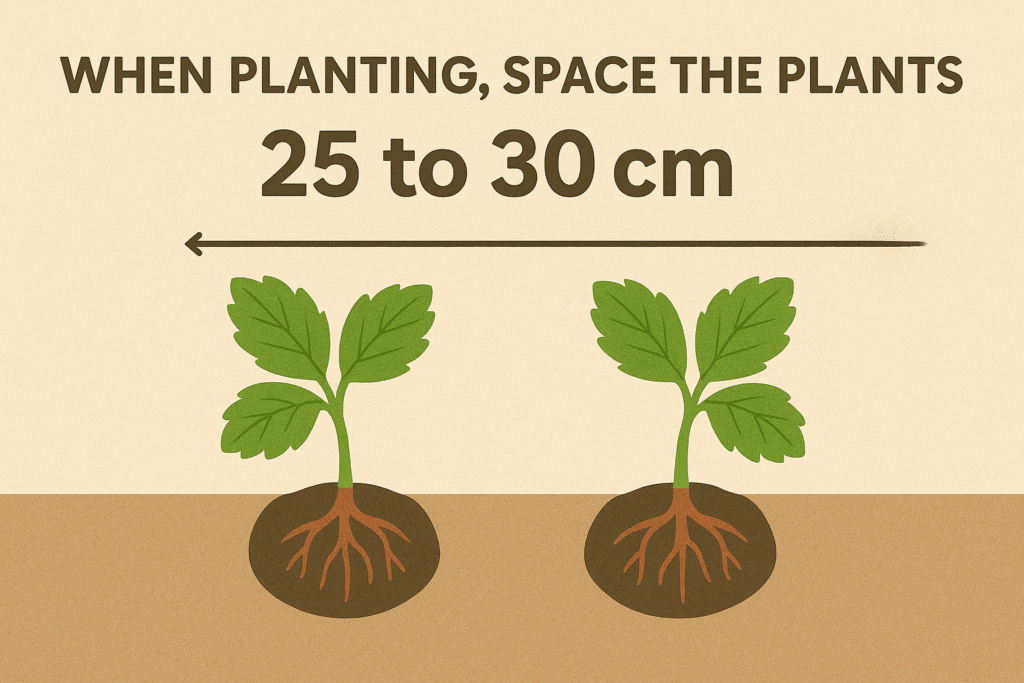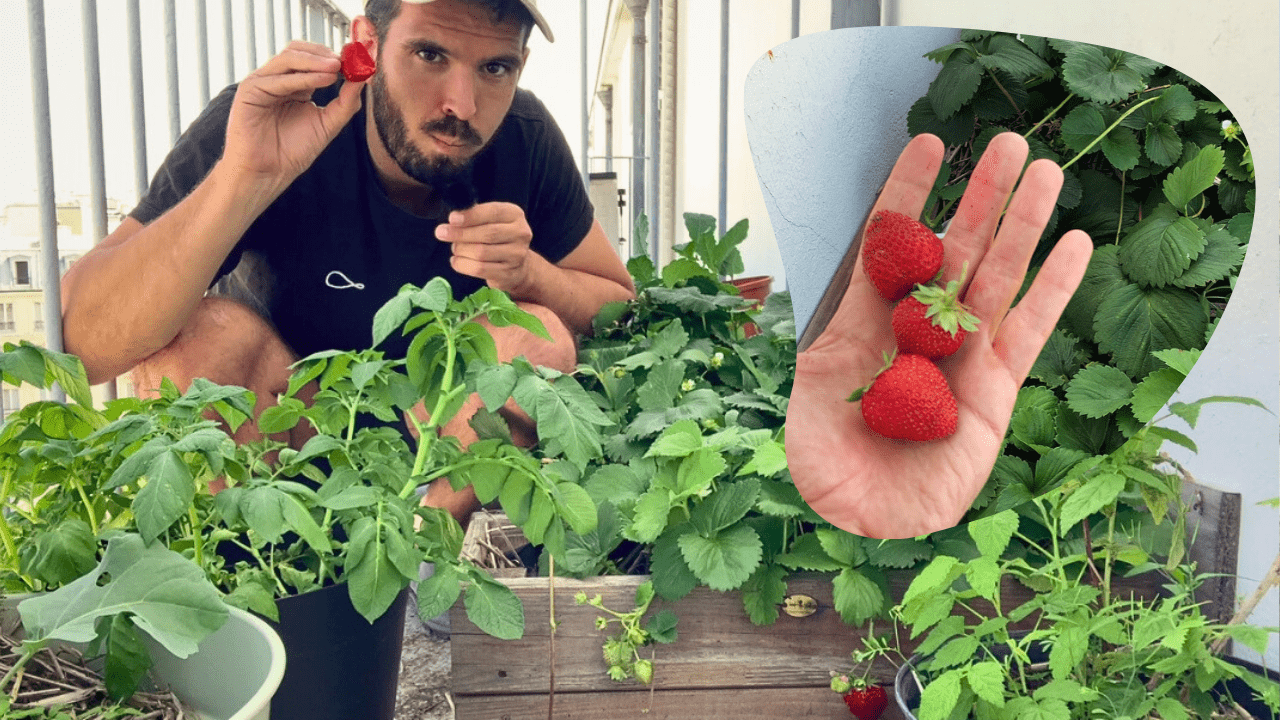When I planted my very first strawberry plants on my balcony three years ago, I had visions of overflowing bowls of sweet red fruit. The reality? My first harvest barely filled my palm—five tiny berries that disappeared in one breakfast. I realized growing strawberries in pots wasn’t just about sticking them in soil and hoping for the best.
Through trial, error, and a lot of sunny afternoons tending to my plants, I’ve learned exactly what strawberries need to thrive in a small-space setup. The best part? You don’t need a green thumb, a big budget, or a garden plot to succeed. If you have a balcony, a few pots, and some sunlight, you can have fresh strawberries from spring to autumn.
In this guide, written for complete beginners, I’ll walk you step-by-step through choosing the right plants and containers, setting up your balcony garden, daily care, harvesting, and even troubleshooting common problems.
I’ve also made a video showing exactly how I grow strawberries on my own balcony. It’s packed with simple, practical advice you can try today.
Part 1: Choosing Strawberry Plants and Equipment
Choosing the Right Strawberry Variety for a Balcony
Strawberries generally come in two types:
- Everbearing (Day-Neutral): These plants produce berries in multiple flushes from spring to fall, making them ideal if you want a steady supply.
- June-bearing: These produce one large crop over a few weeks in early summer. They can be incredibly abundant but leave you waiting for the next season.
For small spaces, everbearing is usually best—you’ll get a few berries at a time, often enough to snack on or add to desserts, without overwhelming your space.
Recommended Balcony-Friendly Varieties:
| Variety | Type | Characteristics |
|---|---|---|
| Mara des Bois | Everbearing | Sweet, fragrant, French variety with a wild strawberry aroma |
| Mount Everest | Everbearing | Perfect for hanging baskets, produces medium to large fruits |
| Quinalt | Everbearing | Large, soft fruit; good for continuous harvest |
Tip : If possible, buy certified disease-free plants from a reputable nursery. This reduces the risk of starting with hidden problems.
Choosing the Right Containers
- Size: For a single plant, use a pot at least 8–10 inches (20–25 cm) in diameter.
- Depth: Minimum 8 inches to allow healthy root development.
- Material:
- Terracotta: Breathable but dries out quickly—ideal for humid climates.
- Plastic or Glazed Ceramic: Retains moisture longer, good for hot, dry areas.
- Specialized Options : Hanging baskets save space and keep fruit away from pests; strawberry towers maximize vertical space.

The Best Soil and Fertilizer for Strawberries
- Why Not Garden Soil? It’s too dense, holds water unevenly, and can suffocate roots in pots.
- Ideal Mix : A high-quality, peat-free potting mix enriched with compost for nutrients and perlite for drainage.
- Fertilizer Choice: Use a balanced (e.g., 10-10-10) or low-nitrogen organic fertilizer. Too much nitrogen encourages leaves, not fruit.
Part 2: Setup and Planting
Preparing the Pots
- Add a 2–3 cm drainage layer (clay pebbles, gravel, or pottery shards).
- Fill with potting mix, leaving 2–3 cm from the rim.
- Gently firm the soil without compacting it.
Planting the Strawberry Plants
- The Crown: This is the thick, central part where leaves meet roots. It must sit exactly at soil level—burying it risks rot, and planting too shallow exposes roots.
- Spacing: 25–30 cm between plants for airflow and to reduce disease risk.
- Pro Tip: For first-year plants, pinch off the first few flowers to help roots establish—leading to better yields later.

Finding the Perfect Spot on Your Balcony
- Full Sun: 6+ hours daily for optimal flowering and fruiting.
- Partial Sun: Will produce fewer, smaller berries.
- Too Little Light: Results in lots of leaves but little fruit.
- Wind Protection: Use railing screens or plant near walls to reduce leaf stress.
Part 3: Daily Maintenance
Watering Like a Pro
- Frequency: Daily in hot weather, every 2–3 days in cooler periods.
- Overwatering Danger: Roots can rot—check with the “finger test” before watering.
- Hot Weather Tip: Water early in the morning to reduce evaporation.
Fertilizing for Continuous Harvests
- Apply once a month during the growing season.
- Use liquid feed for quick absorption or slow-release pellets for convenience.
Pruning and Managing Runners
- Runners: Long stems with baby plants—cut them off unless propagating.
- Leaf Care: Remove yellow, damaged, or diseased leaves to improve airflow.
- Flower Management: First-year plants benefit from removing initial blooms.
Pest and Disease Protection
- Birds: Use netting or cloches.
- Slugs: Try copper tape around pots or hand-picking in the evening.
- Aphids: Wash off with water or spray with soapy water.
Part 4 : Harvesting and Extra Tips
Harvesting Your Strawberries
- Pick when fully red and firm.
- Best done in the morning after dew has dried for maximum flavor.
Winterizing Balcony Strawberries
- Why: Potted roots are more exposed to freezing than in-ground plants.
- How: Wrap pots in burlap or bubble wrap, or move to a sheltered spot.
Extending the Life of Your Plants
After 2–3 years, plants may produce fewer berries. The best hack is to rejuvenate your patch by planting runners or dividing healthy plants.
Part 5: Common Problems and Solutions
| Problem | Likely Cause | Quick Fix |
|---|---|---|
| Leaves turning yellow | Overwatering, nutrient deficiency, pest damage | Adjust watering (let top 2–3 cm dry), add balanced fertilizer, inspect for pests |
| Small or sour berries | Not enough sunlight, lack of fertilizer | Move to 6+ hours of sun, feed monthly during growth |
| No fruit | Low light, immature plants, poor pollination | Ensure 6+ hours of sun, allow plants to mature, gently shake flowers or attract pollinators |
Growing strawberries on your balcony is rewarding, even for complete beginners. With the right variety, good soil, and a bit of care, you’ll be rewarded with sweet, homegrown berries for months on end. It’s the perfect fruit to grow when you’re new to container gardening, and it tastes amazing with your potted mint !
🌿 Join Our Balcony Gardening Community !
Share your balcony garden progress, get feedback from other urban gardeners, and discover new ideas every week.

